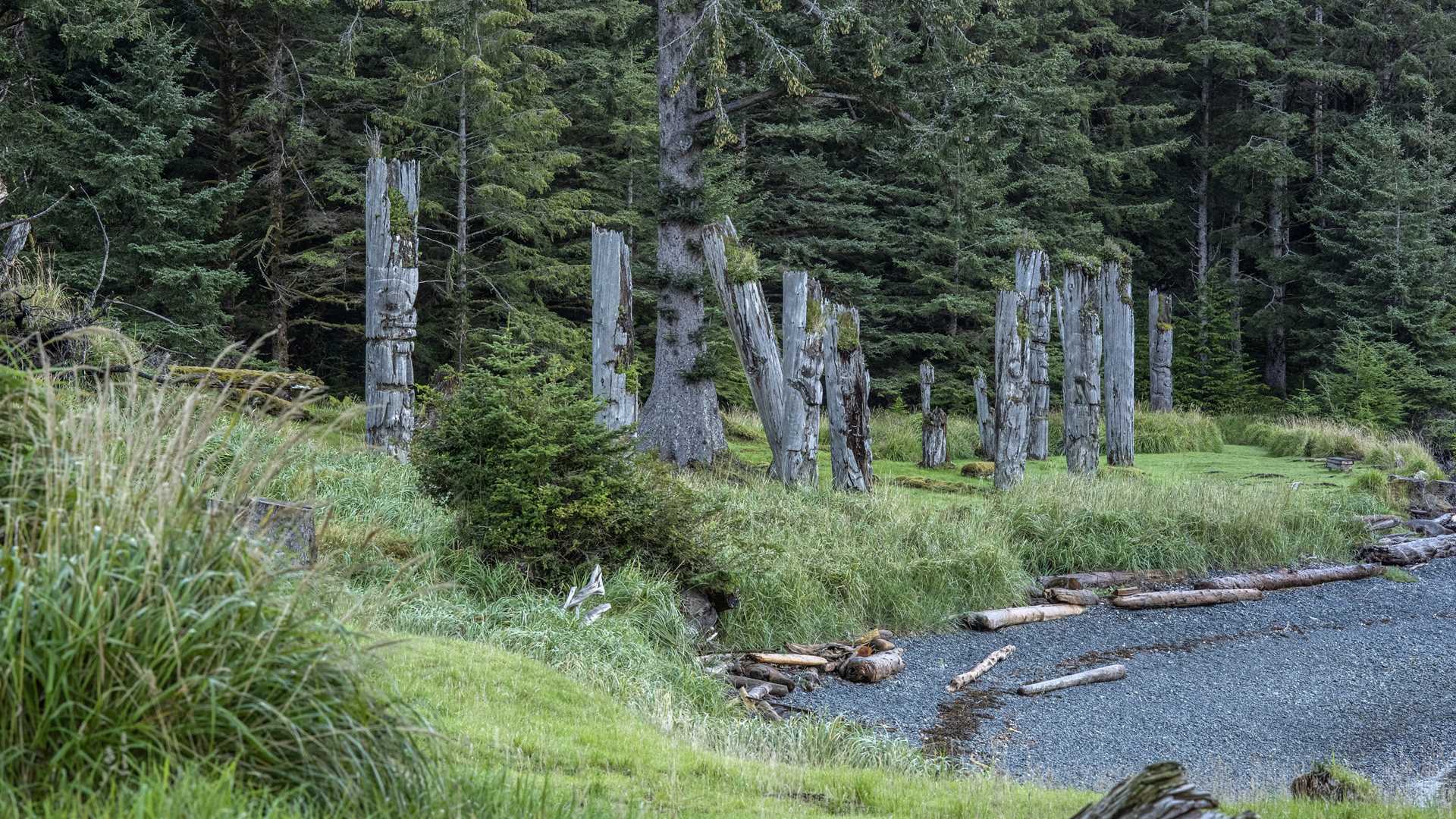Early this morning, National Geographic Sea Lion cruised south as we headed for our morning anchorage of Anthony Island and the Unesco World Heritage Site, Sgang Gwaii. It is also a Haida Heritage Site, a village site with mortuary poles standing exactly where they were raised…the only site like it in the world!
After breakfast, our guests were divided into groups, and our day began. Some of us went on Zodiac tours while the rest of our group went ashore to walk to the village site. Some guests walked through the forest that makes up a good part of Anthony Island. This relatively small island is exposed to the Pacific on one entire side. The actual village site is considered the most secluded and protected of all the Haida village sites. It is in a sheltered bay on the eastern side of the island and is protected by a very rocky islet facing the village. Only one narrow channel provides access to the village and only at high tide. This same channel is completely dry at low tide. The Haida name for the village was Sqa’ngwa-i Inaga’i. When translated, this means Red Cod Island town. During the height of Haida village life, there were twenty houses and just over 300 people living in this protected spot that is surrounded and protected by the sea.
Those of us who entered the village site were escorted by Haida watchmen who told the story of the place. They added in their own stories of growing up in Haida Gwaii and learning from their families the history of not just Sgang Gwaii, but how the Haida have lived in these many islands that make up Haida Gwaii for thousands of years.
While part of our group visited the village, the other half took a lovely walk around the back side of Anthony Island. They passed through a largely western hemlock forest on an extremely well-constructed boardwalk. In the winter of 2018, one of the most severe hurricane force winds hit this southern part of Haida Gwaii, causing a huge blow down of many large Sitka spruce, western hemlocks, and big leaf maples. The destruction was still very visible as we completed our circle around the island and returned to our landing beach.
While village visitors walked Anthony Island and the village site, the other half of our group took Zodiac rides north and south along the eastern side of the island. Our Zodiacs visited a series of large rookeries for seabirds at the northern end of the island and a haul out for Steller sea lions to the south. There was a strong wind, but it was a warm and pleasant day. As we cruised by Zodiac, we could see a weather change coming in from the Pacific Ocean, perhaps a foretelling of days to come? There was a constant roll at our anchorage, and as each Zodiac returned to National Geographic Sea Lion, the rolls of the sea continued. As late afternoon approached, all visitors returned to the ship. Cocktail hour and recap arrived at their usual times. During dinner, the captain and our expedition leader arrived to make an urgent announcement. A very strong gale was heading for Haida Gwaii. There was a strong possibility of high winds and nine-foot seas the following day. It was decided that we should head south. We crossed Hecate Strait and headed for the protection of the coast of British Columbia. It was our good fortune that Linda Tollas, our Haida escort, would be coming with us! She will stay aboard until September 9th when we arrive in Alert Bay, British Columbia. Our coming days will be filled with stories from Linda and a chance to explore the unseen and protected waters of the Inside Passage of British Columbia.







